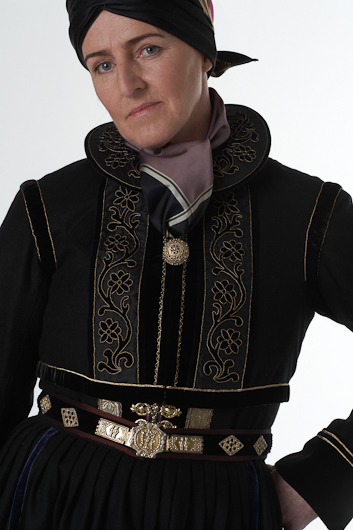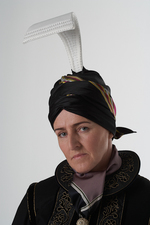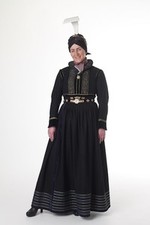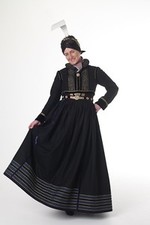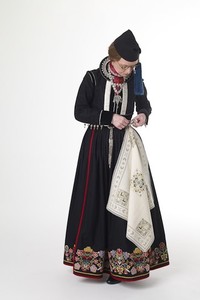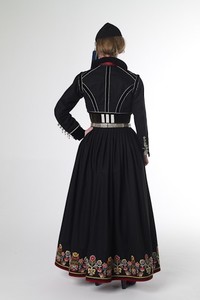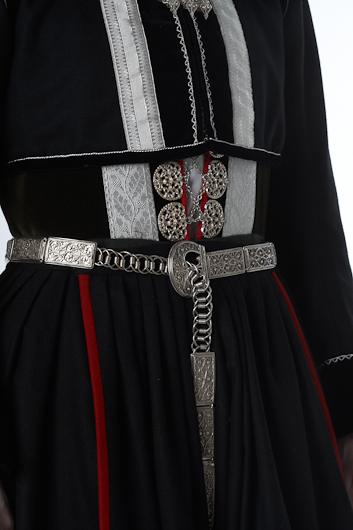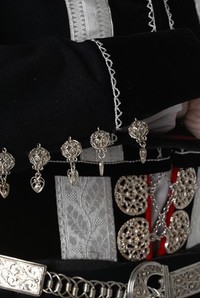19th century faldbúningur
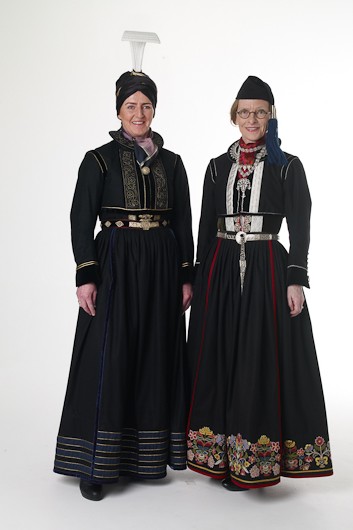 In the 19th century costumes became simpler than before. The faldbúningur was now worn with a spaðafaldur: the high curved part of the headdress was flattened into a spatula shape, widest at the front, tapering back to where it was fixed to a small linen or knitted cap. The spatula was of white linen, pinned over card or wire. A contrasting silk scarf was wrapped around the cap and the bottom of the faldur. There was little change in the upper part of the costume: women wore a chemise and coloured upphlutur (bodice), and a short black jacket with facings and ribbons, with long, close-fitting sleeves and a separate collar. The skirt or samfella was black or dark blue, with no separate apron; instead the “apron” was integrated into the skirt, with piping at the seam. The bottom of the skirt was bordered with velvet trim, lace or embroidery, the deepest border being on the “apron.” A silk scarf was fastened with a brooch. The costume was worn with a belt, and often necklaces. For everyday wear women often used a tasselled cap instead of the faldur headdress. This became increasingly common in the course of the 19th century.
In the 19th century costumes became simpler than before. The faldbúningur was now worn with a spaðafaldur: the high curved part of the headdress was flattened into a spatula shape, widest at the front, tapering back to where it was fixed to a small linen or knitted cap. The spatula was of white linen, pinned over card or wire. A contrasting silk scarf was wrapped around the cap and the bottom of the faldur. There was little change in the upper part of the costume: women wore a chemise and coloured upphlutur (bodice), and a short black jacket with facings and ribbons, with long, close-fitting sleeves and a separate collar. The skirt or samfella was black or dark blue, with no separate apron; instead the “apron” was integrated into the skirt, with piping at the seam. The bottom of the skirt was bordered with velvet trim, lace or embroidery, the deepest border being on the “apron.” A silk scarf was fastened with a brooch. The costume was worn with a belt, and often necklaces. For everyday wear women often used a tasselled cap instead of the faldur headdress. This became increasingly common in the course of the 19th century.


